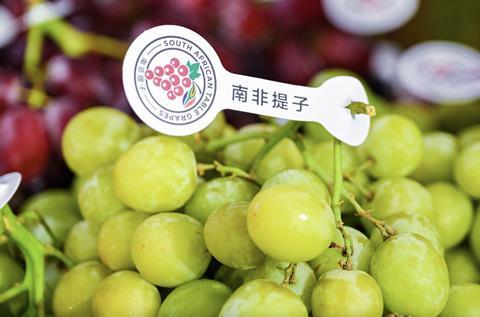New opportunities beckon, but traditional markets are still key for the country’s table grape industry

A review of recent progress has confirmed that South Africa’s table grape exporters and growers are continuing to focus on traditional markets while exploring opportunities for diversification.
Over the past ten years, South Africa has increased the volume of table grapes it exports to its key traditional markets, the UK and the EU.
This has happened in line with the growth seen in the total volume of grapes exported.
However, as part of a strategy to diversify its markets, the country has also increased the volume of grapes shipments to regions that hold growth potential.
About 80 per cent of exports still go to the EU and the UK, but in volume terms – albeit from a low base – there have been notable increases in exports to North America, for example.
Overall, exports to North America have roughly doubled from about 4 per cent of total exports ten years ago to 8 per cent.
South Africa now has access to 16 of the world’s top 20 table grape importing countries. Over the past ten years, and specifically the last six years or so, it has gained much ground in market access in fast-developing markets of the East, specifically China and Vietnam.
Good progress has also been made to gain access to the Republic of Korea and the Philippines.
It is, however, quite a different challenge to turn market expansion into greater sales. For one, these markets require cultivars that are favoured by their local trade and consumers.
Five years ago, opportunities in the East, especially China, were shining brightly. However, this market is not without its challenges and volume growth for South African grapes has been slow.
This has been partly due to increased domestic production and competition from countries such as India.
South Africa, and other exporters, also had to deal with Covid-19, which threw the global perishable trade into disarray.
Competition from other export commodities and internally in some countries in the East have also affected growth opportunities.
This year, these competitive challenges came in the form of an ”avalanche of cherries” flooding the markets in China.
Sources said that some 33,000 containers of cherries from Chile arrived just before, during and after the Chinese New Year. At one market in China 300 containers arrived every day.
This has dampened the appetite to ship to the Far East and Southeast Asia, although exporters have said there are still golden opportunities in these regions – provided they can land the best possible products there.
For growers and exporters who must make sure they return every extra South African rand back to the farm to deal with rising input costs, it is a no-brainer.
They had to follow the best returns and that is often determined by the strength of the South African currency against the major currencies of the world.
This is where the euro and British pound have been consistently strong and stable.
Lastly, regular shipping routes and smooth logistical operations also determine where one can reasonably ship highly sensitive products too.
Failures in South African ports in previous seasons have caused major delays. Shipping to Europe by various shipping modes is, however, still quicker than serving Eastern markets.
Recently, South African grape growers and exporters have also seen new opportunities in the US, in addition to the gains they have made in recent years in Canada.
At present it is attractive for them to ship to the US under the advantages given to them by the American Growth and Opportunities Act (AGOA).
However, trade relations between South Africa and the US are presently in a delicate state. No-one knows what will happen in the future.
Grape exporters say it is vital for South Africa to continue increasing and improving market access in the Far East and Southeast Asia to ensure that exporters and growers can take advantage of a full range of marketing opportunities around the world.



